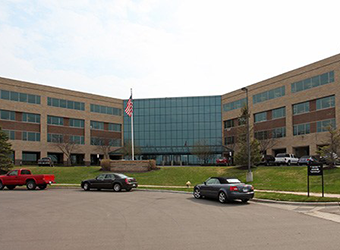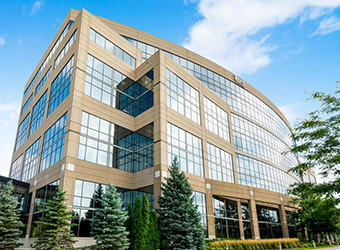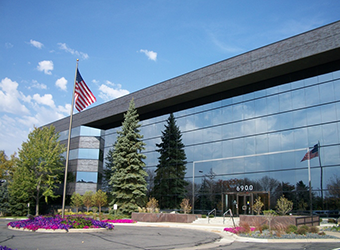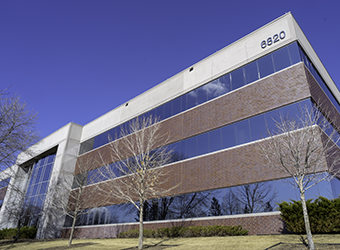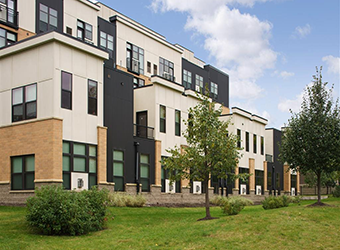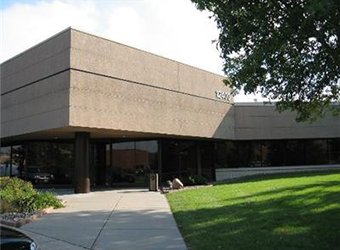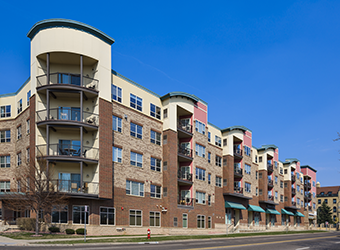The Twin Cities multitenant commercial real estate industry remained active in the second half of 2018, even as multiple property types faced changing occupier and consumer preferences, dramatically outpacing projections for absorption and showing staying power for 2019 and beyond. At the end of 2018, the market’s multitenant properties posted a vacancy rate of 10.9 percent, according to Cushman & Wakefield’s bi-annual Compass Report, up slightly from the 10.6 percent rate posted six months prior.
A total of just over 1 million square feet (msf) was absorbed by occupiers throughout the office, industrial and retail property types in the second half of 2018, significantly more than what Cushman & Wakefield had projected for the six-month period. 2018 ended with 2.78 msf of absorption across those property types, the market’s best year for absorption since 2015. The industrial sector drove much of the activity with 2.78 msf absorption over the course of the year. Office saw 600,000 square feet (sf) of absorption, while retail saw negative absorption of the same amount.
New construction continued forward at a healthy pace, with 1.5 msf being built across all property types in the second half of the year. That brought the year-end construction completions to 2.1 msf, down slightly from the 2.5 msf delivered to the market in 2017. The pace is expected to continue into 2019, the first half of which will see approximately 1.5 msf of space delivered to the market, a number that doesn’t include single-tenant build-to-suit developments.
“We’ve seen a lot of changes in the commercial real estate industry during this record-breaking economic cycle, but occupiers and investors remain active across all property types in our market,” said Mike Ohmes, Managing Principal in the Minneapolis-St. Paul office of Cushman & Wakefield. “Our firm continues to project strong absorption in early 2019, and significant properties are under construction, signaling an encouraging start to this year.”
In the second half of 2018:
- Demand in the Hotel market outpaced supply. Even accounting for the more than 6,000 rooms delivered during this economic cycle, hotel demand surged past supply in 2018, growing by 5.0 percent. Supply growth will cool as overbuilding concerns and escalating costs deter some developers. There are currently another 6,000-plus hotel rooms in some stage of development.
- The Medical Office paused amid continued adaptation by users. Leasing and construction have slowed as health systems and providers evaluate their shifting environment and seek to modify their real estate strategies. That may mean some changes are in store for buildings constructed for medical uses that no longer meet the needs of users and their clients. Meanwhile, health care users are among the more active companies seeking retail spaces.
- Retail took steps forward after a string of national bankruptcies. Users are starting to chip away at the inventory of big-box vacancies that have hit the Twin Cities over the past 18 months as retailers such as Sears, JC Penney, and Toys R Us close struggling locations. Some will find single users and many will be demised for smaller retailers, but one constant is that landlords and retailers alike will need to remain flexible. Smaller retail spaces continue to lease well, and many value retailers, fitness brands and fast-casual restaurants are aggressively shopping for new locations.
- Industrial remained active all over the Twin Cities. Industrial has been arguably the biggest growth sector for the Twin Cities commercial real estate market during this cycle, and that growth only continued in the second half of 2018. The market absorbed more than 1 msf in the last six months, bringing its yearlong total to just under 2.8 msf, its best number since 2015.
- Investors kept the Land market busy, seeking out suburban development positions. National homebuilders are doing their best to strategically cope with rising interest rates and construction costs, finding prime parcels for “low-density residential,” the hottest sector in the land market today. Still, builders won’t overpay for lots, and sellers have abandoned unrealistic pricing expectations.
- Capital flowed into the Twin Cities seeking new opportunities. The market continues to attract investors from other markets, who are interested in yields unmatched by coastal markets. But a lack of for-sale properties continues to be a hurdle for multiple property types. Still, multifamily, office, industrial and retail boasted higher sales volumes in 2018, and plenty of notable assets are expected to transact in 2019.
- Multifamily’s bull run continued, while the market waited for another big wave of openings. The sector’s ability to withstand thousands of new units coming online has been remarkable, resulting in an extremely tight 2.3 percent vacancy rate. 2019 will be a year to watch for the market, with thousands more units on the way and concessions already creeping up.
- The Office market redefined itself. Despite ongoing changes in office leasing, the market remained active in the second half, with 365,929 sf of absorption recorded in the past six months. Market fundamentals are good – even great in some pockets – with both vacancies and rental rates showing improvement. There are plenty of trends to watch in 2019, including space coming back in the south/airport market and co-working’s continued rise in the Twin Cities.
The full Compass Report is available online at compass.cushwakemsp.com.

